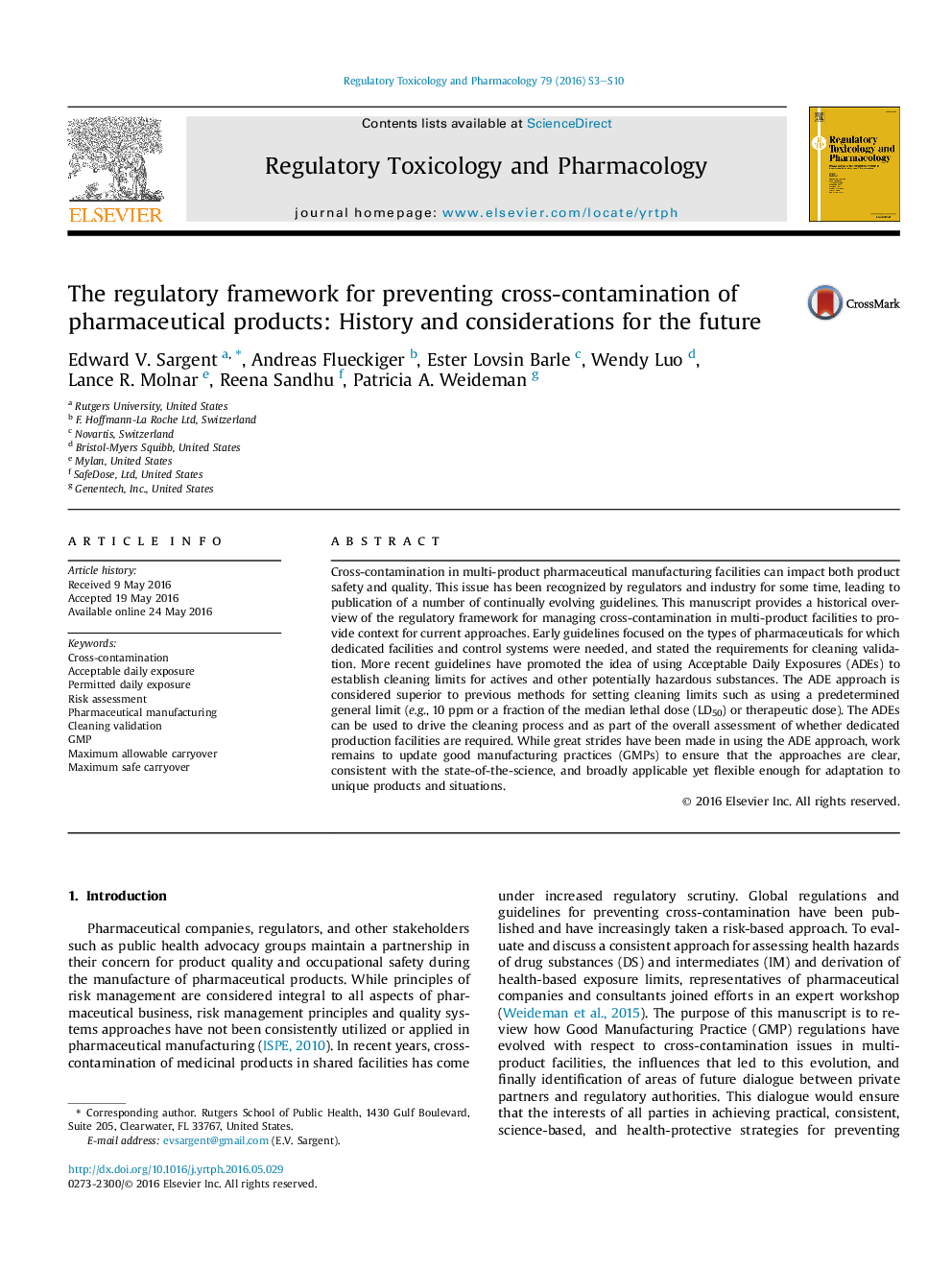| Article ID | Journal | Published Year | Pages | File Type |
|---|---|---|---|---|
| 2592275 | Regulatory Toxicology and Pharmacology | 2016 | 8 Pages |
•Review of evolution of regulatory approaches for managing cross-contamination in multiproduct pharmaceutical manufacturing.•Recent guidances highlight the importance of using Acceptable Daily Exposure for pharmaceuticals as an important tool for setting cleaning limits.•The ADE is preferred over previous methods as it considers the entirety of the data for the chemical in question.•Further harmonization is needed to ensure that the ADE concept is applied broadly and consistently, yet maintains flexibility.
Cross-contamination in multi-product pharmaceutical manufacturing facilities can impact both product safety and quality. This issue has been recognized by regulators and industry for some time, leading to publication of a number of continually evolving guidelines. This manuscript provides a historical overview of the regulatory framework for managing cross-contamination in multi-product facilities to provide context for current approaches. Early guidelines focused on the types of pharmaceuticals for which dedicated facilities and control systems were needed, and stated the requirements for cleaning validation. More recent guidelines have promoted the idea of using Acceptable Daily Exposures (ADEs) to establish cleaning limits for actives and other potentially hazardous substances. The ADE approach is considered superior to previous methods for setting cleaning limits such as using a predetermined general limit (e.g., 10 ppm or a fraction of the median lethal dose (LD50) or therapeutic dose). The ADEs can be used to drive the cleaning process and as part of the overall assessment of whether dedicated production facilities are required. While great strides have been made in using the ADE approach, work remains to update good manufacturing practices (GMPs) to ensure that the approaches are clear, consistent with the state-of-the-science, and broadly applicable yet flexible enough for adaptation to unique products and situations.
